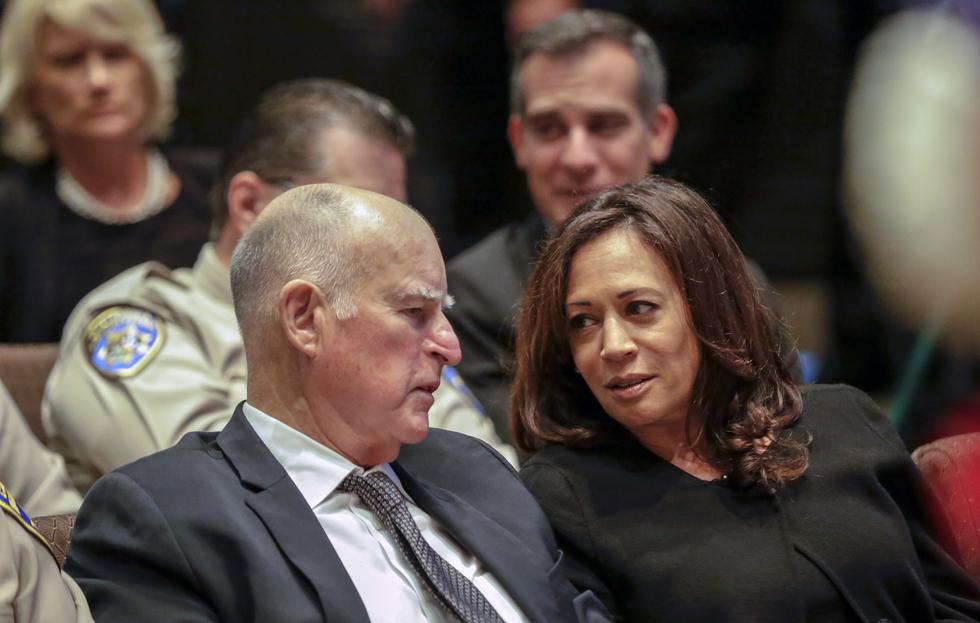Sen. Kamala Harris (D-CA), a leading candidate to be Joe Biden’s running mate, repeatedly and openly defied U.S. Supreme Court orders to reduce overcrowding in California prisons while serving as the state’s attorney general, according to legal documents reviewed by the
Prospect. Working in tandem with Gov. Jerry Brown,
Harris and her legal team filed motions that were condemned by judges and legal experts as obstructionist, bad-faith, and nonsensical, at one point even suggesting that the Supreme Court lacked the jurisdiction to order a reduction in California’s prison population.
The intransigence of this legal work resulted in the presiding judges in the case giving serious consideration to holding the state in contempt of court. Observers worried that the behavior of Harris’s office had undermined the very ability of federal judges to enforce their legal orders at the state level, pushing the federal court system to the brink of a constitutional crisis.
This extreme resistance to a Supreme Court ruling was done to prevent the release of fewer than 5,000 nonviolent offenders, whom multiple courts had cleared as presenting next to no risk of recidivism or threat to public safety.
More from Alexander Sammon
Despite a straightforward directive from the Supreme Court to identify prisoners for release over a two-year period, upholding a 2009 ruling that mandated the same action over the same timeline, the state spent the majority of that period seesawing back and forth between dubious legal filings and flagrant disregard. By early 2013, it became clear that the state had no intention to comply, leading to a series of surprisingly combative exchanges.
While Harris’s ultimately unsuccessful presidential campaign saw questions raised about her criminalization of truancy and her tough-on-crime reputation during her time as San Francisco’s district attorney, her role in California’s prison reduction case largely flew under the radar, though it was decried at the time. As concerns grow about Donald Trump’s subversion of the law—he, along with his attorney general, William Barr, is currently
defying a Supreme Court ruling by refusing to restart the Deferred Action for Childhood Arrivals program—the potential Democratic vice-presidential nominee engaging in relatively similar obstinacy is jarring.
Sen. Harris’s office has yet to respond to a set of questions from the
Prospect.
HOW DID HARRIS’S office turn a simple court order to release low-risk prisoners to prevent cruel and unusual punishment into a constitutional fiasco?
Federal courts seldom look to prisoner release; it’s a remedy of last resort. But California was a unique case, with its uniquely awful prison system. At its height, it was stuffed to some 200 percent of its designed capacity. There were not enough beds or medical personnel but an extreme excess of bodies. In one prison, 54 prisoners shared a single toilet. Preventable deaths due to substandard and overstretched medical care occurred every five to six days. Suicidal inmates were locked in telephone-booth sized cages for 24 hours at a time.
For nearly two decades, Republican and Democratic administrations essentially ignored the problem, despite constitutional protections for prisoners against cruel and unusual punishment enshrined in the Bill of Rights. Finally, in 2009, a federal district court found that no other plausible solution existed for getting the state to conform to a constitutionally reasonable standard than a forced prisoner release. An earlier pledge, given before Harris’s time, to quickly build new prisons was not seen as credible, especially amid the Great Recession and California’s limited finances. The district court mandated that the state enact a series of decarceration measures to reduce the prison population to 137.5 percent of its design capacity within two years.
The state appealed the district court ruling, and on May 23, 2011, the Supreme Court found in
Brown v. Plata that California’s prison system was in violation of its prisoners’ Eighth Amendment rights. Despite its relatively conservative tilt, the Court identified prisoner release as the most effective method for ending the state’s constitutional violation in a timely manner.
The verdict split 5-4, with conservative Justice Anthony Kennedy joining the Court’s liberals. Upholding a lower-court mandate, Kennedy wrote the majority opinion in the case, including an array of gruesome details from inside those prisons, and condemning the state for facilitating “needless suffering and death,” as he called it.
At that point, Kamala Harris had been the state’s attorney general for just over four months, representing California as its top legal officer. But the Supreme Court ruling would have to be enacted on her watch. Every six months, the state would have to show it had decreased its prison population in compliance with a threshold overseen by a three-judge district court panel: 167 percent of capacity by the end of 2011, 155 percent by June 2012, finally arriving at the target level of 137.5 percent by June 2013.
It soon became clear that the state would hold out on complying with the judicial order. 2011 passed with little progress made on the decarceration mandate, and by 2012, a report surfaced that proved the state actually intended to increase its prison population. In May of that year, Harris’s office “confirmed their intent not to comply with the Order but instead to seek its modification from 137.5 percent design capacity to 145 percent,” a modification that was not permitted. The deadline for compliance was eventually extended to the end of 2013.
 they make the laws with negative effects in mind for us.
they make the laws with negative effects in mind for us.





